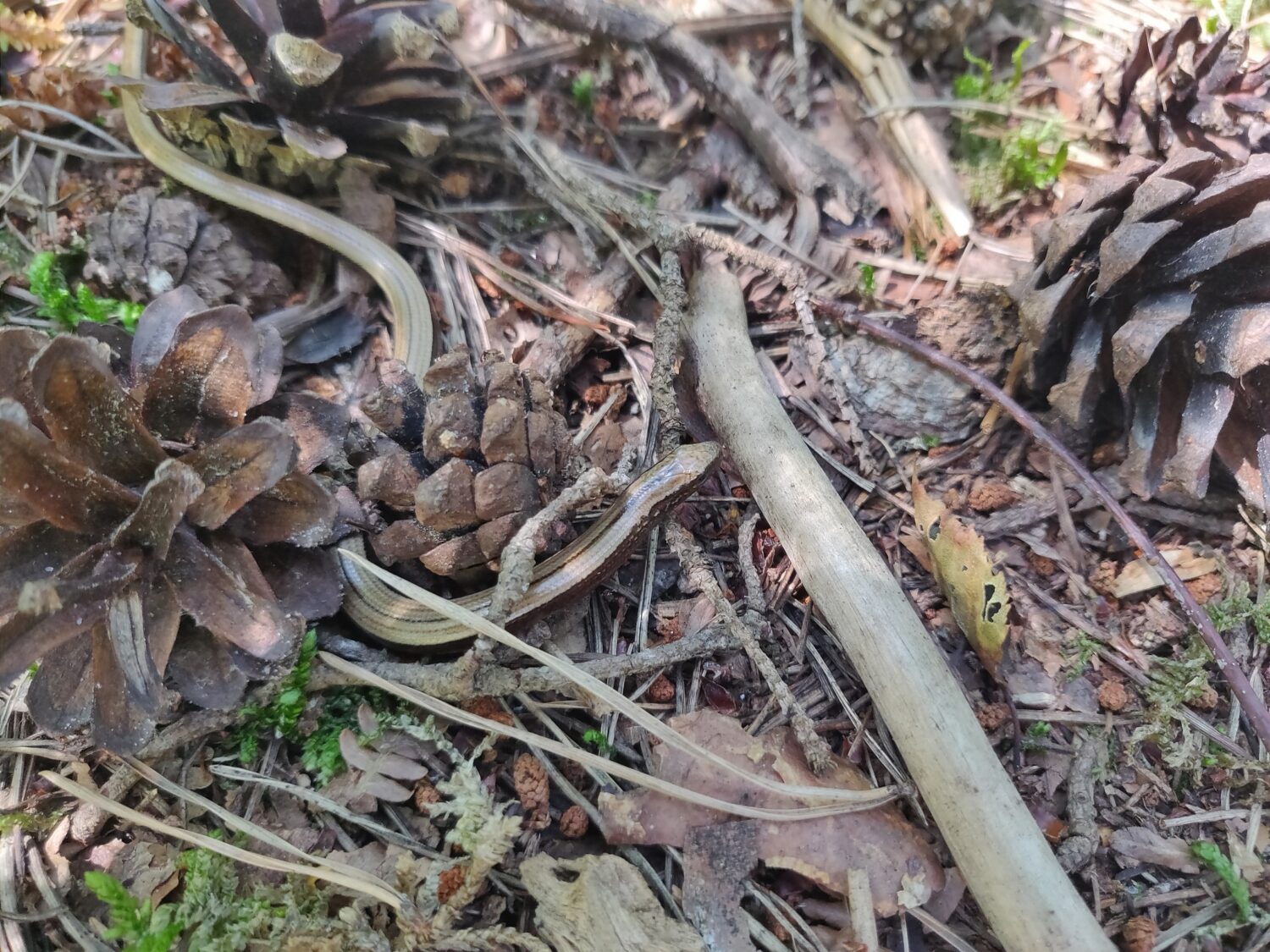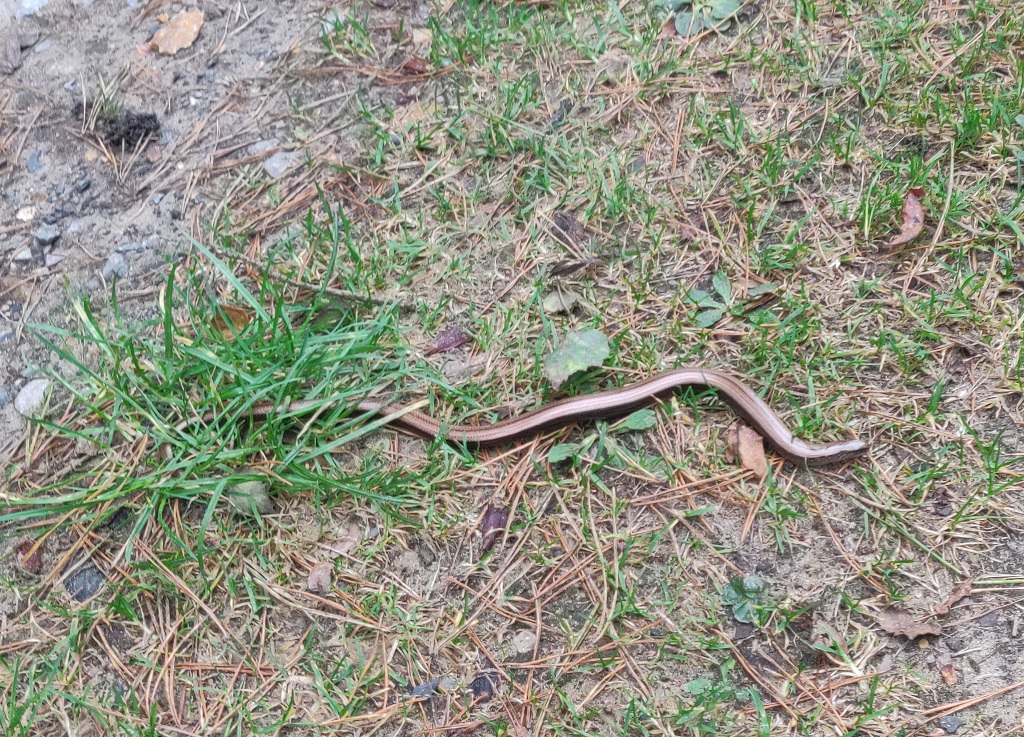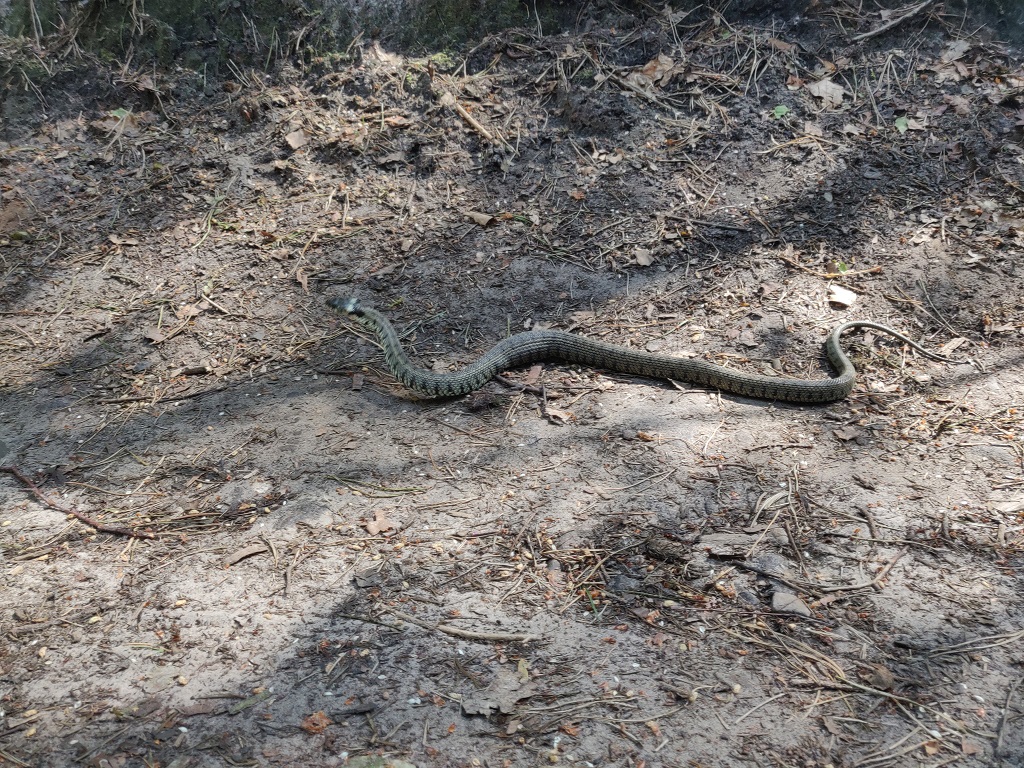I thoroughly enjoy getting out into nature by way of my trail running. There are so many benefits to trail running that have kept me hooked for years now. Spotting flora and fauna are one of those plus points when out running. For me personally, looking out for the elusive Slow worm (Anguis fragilis) is something I always enjoy.
The Slow worm
Slow worms are often mistaken for snakes. They’re not snakes! In fact, they are legless lizards. I made this same mistake myself when I first found one. If you don’t look carefully you can easily mistake it for smooth snake from a distance.
The slow worm is just that – slow. From my observation they’re really lazy and lethargic. I’ll often nudge them gently to try to coerce them into the grass and off the trail. The last thing I want is for the next runner / walker / mountain biker to squish them.
They can be so lazy in fact, that even nudging them won’t get them to move. Here’s a particular stubborn little guy that just wasn’t budging after repeated prods.
Slow worm Habitat
Heathlands and grasslands seem to be their favourite places to hang out. I’ve almost always spotted them lying lazily across warm, sun exposed sections of trail. Usually they seem happiest basking in the sun in sandy areas of trail.
Basically any substrate or surface that is good at absorbing the warmth of the sun is fair game for slow worms.
This actually puts them in danger, as they’re really easy to step on if you’re out hiking or running. Even worse if you’re on a mountain bikes as you’re very unlikely to see these little reptiles at speed.
I’m not sure which parts of the UK they’re most common in, as I’ve only ever seen them in the South of England where I am currently located.
They’re quite rare too. I tend to run trails between 2 – 5 times a week, average 3 x times a week, and on average I might see them 3 x times a year.
Of course you don’t really see them in the colder months. May to October seem to be the months where they’re most commonly out.
More information about UK snakes
Check out this page over at The Wildlife Trusts if you’re looking to identify snakes in the UK.




I didn’t know that about snakes vs. slow worms. So interesting!
Last week, I came across a Cape Cobra for the first time in my life. I was running in the Kirstenbosch area. It was sunbathing on the Path and raised its head when I came along. But then it quickly disappeared.
I’m happy it wasn’t as lazy as the Slow Worms.
Catrina, that’s awesome you’re back in South Africa (and specifically the Cape). (I’m heading right on over to your blog in the hopes that you’ve posted something!)
That’s a pretty scary thought to be honest. For me, cobras are the worst. There’s something about their hoods that make them even more ominous looking. I guess its a good time season-wise for them to all be starting to make an appearance.
I hope you are having (or have had) a great time there.
This is very fascinating,sean. The 1st I have ever heard of slow worms. in canada we have dew worms or sometimes called earthworms. They will surface if there is heavy rains and the ground becomes saturated. . If the sun comes out there is a good chance they will bake.
I live in a lower area, so this happens a few times each summer. I will rescue them and put them in my raised garden where the ground is less saturated. I work a lot of leaves in the fall into the garden, so there is a lot of organic matter. The worms digest the leaves. The worm casting are like manure and is a great fertilizer.
I’m not too sure thgis is in all caps, as my cap lock is off. Hope you are well. Thank you for sharing.
Hi Carl, I am doing well, and thanks for dropping by! I know earthworms very well. We used to get lots in South Africa when I lived there. Here in England though I’ve only ever come across smaller ‘red’ worms and the like in the garden. We actually have a wormery setup – all our vegetable offcuts, eggshells, coffee grounds and brown papers go in there. The worms are thriving. We have hundreds if not thousands of castings each year. The liquid that collects at the bottom is great fertilizer along with the actual digested matter in the top sections!
As for the slow worms, they’re definitely a little different to worms. Much closer to reptilian in my opinion. In fact the first time I saw one, I mistook it for a snake. I have since learned the difference though, and thought it would make for an interesting little blog post to share the knowledge.
I need to figure out the styling here that makes it look like input is in all caps! Thanks for spotting that.
Keep well, and I look forward to reading your next post!